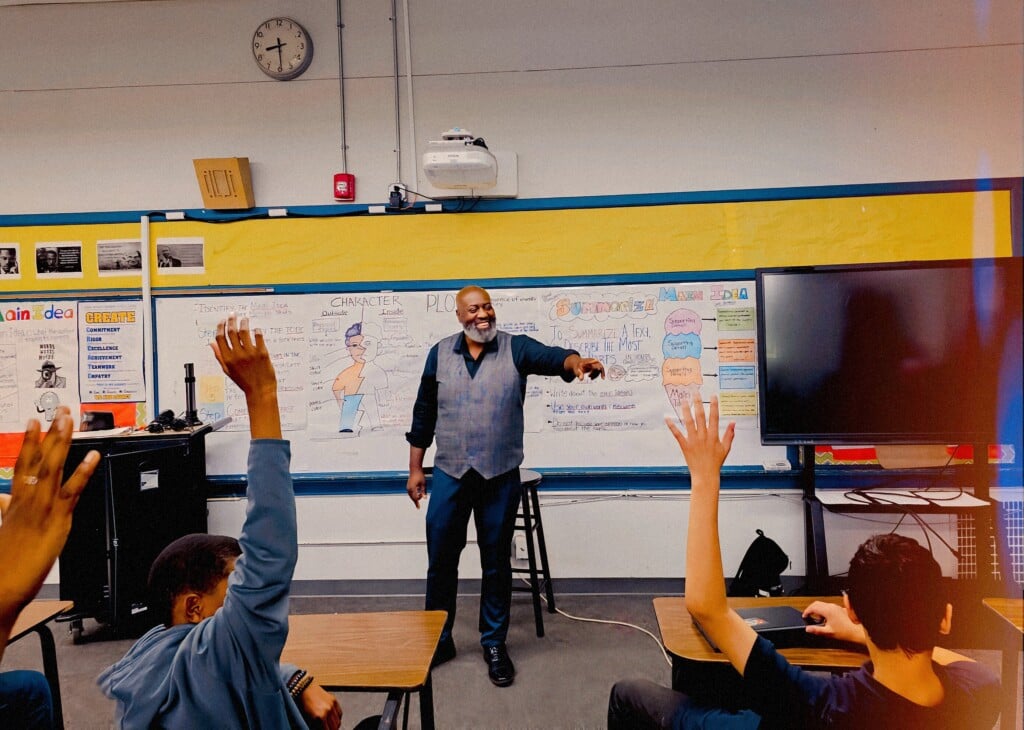Expert Primary Science Tuition Singapore for Understanding Complex Concepts
Expert Primary Science Tuition Singapore for Understanding Complex Concepts
Blog Article
A Comprehensive Overview to the Various Learning Techniques in Key Science Direction
The expedition of diverse learning approaches in key science instruction provides an opportunity for educators to boost student involvement and comprehension considerably. By taking a look at hands-on knowing techniques, inquiry-based methods, and collaborative approaches, we can recognize effective techniques that cater to various learning styles. Additionally, the integration of innovation and differentiated instruction plays a critical duty in cultivating a comprehensive atmosphere. The question stays: just how can these techniques be efficiently implemented in the class to maximize their impact? The answer hinges on a better examination of each strategy and its ramifications for mentor science.

Hands-On Learning Strategies
Hands-on understanding methods play an essential role in key scientific research guideline, engaging pupils in energetic exploration and experimentation. These methods allow students to connect straight with sensations and products, promoting a deeper understanding of clinical principles. By utilizing manipulatives, versions, and real-life experiments, educators produce an environment where pupils can observe, hypothesize, and evaluate their ideas.
Such strategies not just enhance comprehension however also cultivate critical reasoning and analytical skills. When pupils participate in tasks like building straightforward devices, growing seeds, or carrying out chemical responses, they are urged to ask inquiries and seek responses via their very own monitorings. This experiential technique assists to demystify complex scientific concepts, making them a lot more relatable and easily accessible.
Moreover, hands-on discovering advertises cooperation amongst peers, as pupils frequently operate in teams to carry out experiments or share searchings for. This synergy not just enriches their knowing experience yet also develops crucial social skills. Eventually, integrating hands-on methods in primary scientific research guideline promotes a lifelong love of discovering and interest regarding the environment, laying a solid structure for future scholastic quests in science and beyond.
Inquiry-Based Understanding
Inquiry-based knowing is a training method that motivates trainees to ask questions, explore sensations, and construct their very own understanding of scientific ideas. This method shifts the focus from traditional teacher-led instruction to an extra student-centered experience, where learners take the campaign in their academic trip. By fostering curiosity, inquiry-based understanding promotes much deeper engagement with the product, permitting pupils to check out topics in a meaningful context.
In method, this technique commonly includes hands-on experiments, monitorings, and important reasoning activities that align very closely with the clinical technique. Trainees are encouraged to formulate theories, design examinations, and examine data, which cultivates vital skills such as analytical and analytic thinking. The duty of the educator in this structure is to promote exploration, assisting pupils with the inquiry procedure while encouraging independent idea and partnership.
Furthermore, inquiry-based learning nurtures a sense of ownership over the discovering procedure, inspiring pupils to go after expertise actively. This approach not only boosts understanding of scientific principles yet likewise fosters a lifelong love for discovering, gearing up students with the skills required to navigate a significantly complicated world.
Collaborative Learning Approaches
Joint learning approaches equip trainees to involve in purposeful communications with peers, promoting a shared responsibility for their educational results. In primary science guideline, these approaches urge learners to collaborate to discover clinical principles, fix problems, and conduct experiments (primary science tuition Singapore). By taking part in group tasks, pupils can take advantage of varied perspectives, allowing for richer understanding and retention of clinical expertise
One trick facet of joint understanding is the emphasis on communication skills. Trainees need to articulate their ideas, listen proactively to others, and discuss concepts, all of which are vital competencies in both academic and real-world contexts. This social interaction not just enhances their understanding of clinical concepts yet also promotes team effort and conflict resolution skills.
Moreover, collaborative learning usually leads to boosted motivation and engagement. They are more likely to take ownership of their knowing journey when pupils see the value of their payments within a team. Teachers can promote this process deliberately structured group jobs that straighten with curriculum objectives while supplying assistance on efficient collaboration methods. Overall, including collaborative understanding methods in main science guideline cultivates a dynamic discovering environment that prepares trainees for future academic and social difficulties.
Technology Assimilation in Science
The combination of technology in key scientific research guideline enhances discovering experiences by giving ingenious tools and resources that support different teaching approaches, including collaborative discovering - primary science tuition Singapore. Making use of electronic platforms, simulations, and interactive applications enables pupils to engage deeply with clinical ideas, assisting in a much more hands-on method to knowing
Virtual labs, as an example, allow students to conduct experiments safely and successfully, promoting inquiry-based knowing. These tools can mimic real-world scientific circumstances, allowing pupils to envision intricate procedures that would certainly be challenging to reproduce in a typical classroom setting. Modern technology cultivates communication and partnership among students, as they can share findings and work together on tasks through on the internet platforms.
In addition, multimedia presentations and educational videos can enrich lessons by catering to diverse discovering designs, making abstract ideas more obtainable. Information evaluation devices additionally equip trainees to accumulate and interpret scientific data, reinforcing critical believing abilities. Generally, the strategic unification of innovation in main scientific research direction not just boosts interaction yet additionally prepares students for a highly sophisticated culture, equipping them with necessary abilities for future scientific ventures.
Set Apart Guideline Strategies
Distinguished guideline strategies are necessary for resolving the varied requirements of students in key science education. These techniques allow teachers to customize their mentor techniques to fit varying capabilities, rate site link of interests, and learning designs within the class. By utilizing set apart direction, instructors can produce an inclusive environment that fosters involvement and boosts understanding of clinical principles.
One effective approach is to utilize flexible organizing, which enables students to team up with peers at similar ability levels or with varying point of views. This method urges peer understanding and promotes critical reasoning. Additionally, using choices in jobs can empower pupils, allowing them to pick tasks that resonate with their rate of interests while still meeting curricular purposes.
Furthermore, incorporating tiered assignments is one more important technique. site here Deliberately tasks with varying degrees of intricacy, instructors can guarantee that all students are appropriately challenged, despite their efficiency. Using developmental analyses to gauge understanding additional allows instructors to readjust their training techniques dynamically, guaranteeing that each student gets the support they require.
Ultimately, implementing set apart direction approaches in main science education and learning not just improves student learning outcomes yet likewise cultivates a passion for scientific research, preparing pupils for future scholastic pursuits.

Verdict
In recap, efficient primary scientific research instruction requires a diverse technique that encompasses hands-on discovering, inquiry-based methods, and joint strategies. The integration of innovation and differentiated direction additionally provides to diverse understanding designs, fostering a setting favorable to exploration and crucial reasoning.
The expedition of diverse knowing methods in primary scientific research instruction offers a chance for educators to boost student involvement and comprehension significantly.Hands-on understanding methods play a crucial role in main science direction, involving trainees in active expedition and trial and error.Inquiry-based knowing is an educational approach that urges trainees to ask inquiries, explore sensations, and create their very own understanding of this content scientific principles.Collaborative understanding strategies encourage pupils to involve in meaningful communications with peers, promoting a common duty for their educational results. Generally, including collective learning approaches in primary scientific research direction grows a vibrant discovering environment that prepares trainees for future academic and social challenges.
Report this page